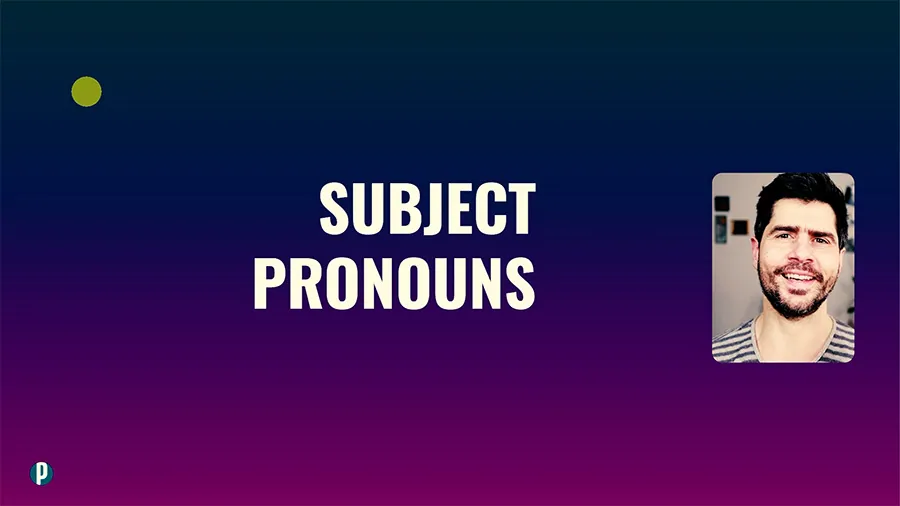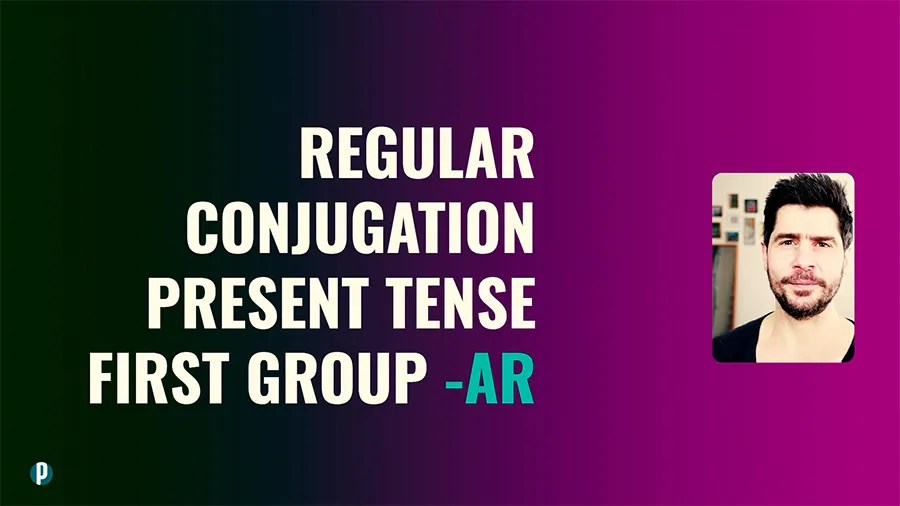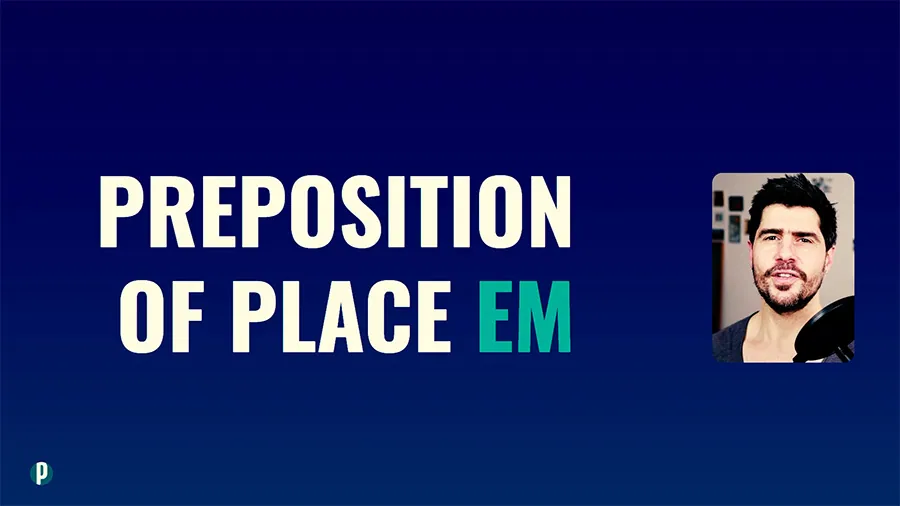Portuguese Grammar: A Beginners Guide
Here’s an introduction to Portuguese grammar for beginners. Plain and easy.
Word order
To understand word order, there are a few basic concepts you need to become acquainted with, that is Subject (S), Verb (V), and Object (O).
In a basic sentence, the Subject acts, the Verb is the action itself, and the Object is what the action falls upon.
Portuguese is an SVO language
Portuguese, like English, is a Subject-Verb-Object language (SVO henceforth):
S > V > O
O Ricardo comeu uma maçã.
Ricardo ate an apple.
Now, this was a basic sentence and languages certainly get more intricate than and easily trump this SVO word order. We can nonetheless assume that Portuguese defaults to it.
Suggested article.
Portuguese Grammar Compared to English.
Adjectives come after nouns
Adjectives are words that describe or modify nouns. For instance, in the phrase “The yellow house“, the adjective “yellow” describes the “house”.
In Portuguese, unlike English, adjectives normally come after the noun they refer to:
O Ricardo comeu uma maçã verde.
Ricardo ate a green apple.
As you see in the sentence above, the adjective verde (green) comes after the noun it refers to, maçã (apple).
Negation
Let’s now look at how to negate the previous sentence:
O Ricardo não comeu uma maçã verde.
Ricardo didn’t eat a green apple.
Notice how the negating adverb não comes before the verb comer (eat). Notice also that in Portuguese, unlike in English, you don’t need the auxiliary verb to negate an affirmative sentence.
Another common feature of Portuguese and Romance languages is the double negation:
O Ricardo não comeu nehuma uma maçã verde.
x Ricardo didn’t eat none green apples. (literal translation)
Interrogative and Declarative Sentences
In the absence of a question word (e.g. what, why, etc.), the word order is kept unchanged regardless of whether we are dealing with declarative or interrogative sentences:
Declarative sentence
Tu estás no Porto.
You are in Porto.
Interrogative sentence
Tu estás no Porto?
Are you in Porto?
The fact that interrogative and declarative sentences look alike, makes intonation all the more important to avoid misunderstandings.
For instance, when asking Tu estás no Porto? you want to finish your utterance in a rising tone so that it comes across as a question.
Question words
Here’s a summary of Portuguese question words.
| Question words | Usage examples |
| O que what | O que estás a fazer? What are you doing? |
| Como how | Como está o teu irmão? How is your brother? |
| Quando when | Quando chegas? When are you arriving? |
| Onde where | Onde estás? Where are you? |
| Porque why | Porque não falas comigo? Why are you not speaking with me? |
| Quanto how much | Quanto é? How much is it? |
| Quantos how many | Quantos melões tens? How many melons have you got? |
| Qual which | Qual preferes? Which one do you prefer? |
Suggested article.
Asking Questions in Portuguese: Question Words and Beyond.
Gender agreement
Portuguese, like other Romance languages, has the so-called grammatical gender. Accordingly, most nouns are either masculine or feminine, just as if penises and vaginas grew out of doors and tables.
And following that, gender permeates the whole language – articles, pronouns, and adjectives will change endings to conform to the gender of the noun they refer to:
A minha casa é espaçosa.
My house is spacious.
O meu apartamento é espaçoso.
My apartment is spacious.
In the first sentence above, the article a, the possessive pronoun minha, and the adjective espaçosa, all have their endings conforming to casa, which is a feminine noun.
Conversely, in the second sentence, the same words conform to the masculine noun apartamento.
Does it sound too intricate to you? Fortunately, there are gender spelling patterns that will help you to feel more at home with gender.
“A” for Feminine, “O” for Masculine
The vowels o and a at the end of nouns often give away the gender:
casa; mesa; cortina; faca
(house; table; curtain; knife)
carro; banco; copo; garfo
(car; bank; glass; fork)
In the examples above, all the words ending with an a are feminine, whereas those ending with an o are masculine. Helpful.
Now, there are nouns ending in letters other than a or o, like the words pente (comb) or telemóvel (mobile). Even if there are other spelling patterns to help you guess the gender of nouns, you’ll have to learn some of it by heart over time.
Suggested article.
Gender of Portuguese Words.
Trust determiners
Determiners are those little words coming right before nouns such as articles, demonstratives, and possessives. As it happens, most determiners will change form to match gender:
Conforming to feminine (zebra is a feminine noun)
a zebra; uma zebra; a minha zebra; essa zebra
(the zebra; a zebra; my zebra; that zebra)
Conforming to masculine (cavalo is a masculine noun)
o cavalo; um cavalo; o meu cavalo; esse cavalo
(the horse; a horse; my horse; that horse)
You can then be sure that cavalo is masculine, not because it ends with an o, but because the preceding words – determiners – tell you that for you.
Here are a few examples of determiners’ masculine and feminine forms:
| masculine | feminine | |
| definite articles the | o | a |
| indefinite articles a | um | uma |
| possessives my, your | meu, teu | minha, tua |
| demonstratives this, that | este, esse | esta, essa |
| numerals one, two | um, dois | uma, duas |
Suggested articles.
Portuguese Definite and Indefinite Articles – When to Use Either
Portuguese Possessive Pronouns and Adjectives
Portuguese Demonstrative Pronouns and Determiners
Forming the plural
S-Plural
In Portuguese, like in English, the most common way to form plurals is by adding an s at the end of words, the so-called s-plural. Let’s compare the same sentence in its singular and plural variants:
singular
O meu carro é escuro.
My car is dark.
plural
Os meus carros são escuros.
My cars are dark.
As we’ve seen before with gender, here too, articles, pronouns, and adjectives change endings to agree in number with the noun they refer to.
ES-Plural
To avoid consonant clusters at the end of words (that’s exceptional in Portuguese), words ending in a consonant (other than -m or -l) will form the plural with an -es rather than the solitary -s:
Um Português, dois Portugueses.
One Portuguese, two Portuguese.
Um aluguer, dois alugueres.
One rental, two rentals.
Suggested article.
Forming the Plural in Portuguese
Verbs and subject pronouns
Romance languages have an infamous reputation for all their verb conjugations. In this regard, Portuguese is no exception and you’ll have to invest some of your time to become familiar with its verb system. Let me give you an initial push.
Regular Verbs
Not all is bad news when it comes to verbs. There are so-called regular verbs that follow a conjugational regular pattern. And there are plenty of them!
We can divide regular verbs into 3 groups according to their infinitive-form ending: -AR, -ER, and -IR. Take a look at these 3 examples, one for each group (conjugational endings in bold, Present tense):
| ANDAR | BEBER | PARTIR | |
| eu (I) | ando | bebo | parto |
| tu (you) | andas | bebes | partes |
| ele, ela (he, she) | anda | bebe | parte |
| nós (we) | andamos | bebemos | partimos |
| vocês (you) | andam | bebem | partem |
| eles, elas (they) | andam | bebem | partem |
Notice that the verb forms above keep their stem unchanged – and, beb, and part respectively. Only the endings will change according to the regular conjugational patterns.
Any verb fitting into these groups will follow the same conjugational pattern. For instance, the regular verbs casar (marry), falar (talk) and acabar (finish) follow the same conjugational pattern of andar.
6 subject pronouns, 5 verb forms
You probably noticed the 6 subject pronouns in the left column: 3 singular (eu, tu, ele/ela) and 3 plural (nós, vocês, eles/elas).
Crucially, while there are 6 subject pronouns, there are only 5 verb forms! And that’s because the 2- and 3-person plural share the same verb form. This applies to all verbs.
Redundant pronouns
It is common for us to drop subject pronouns. Since each pronoun has its verb form, it suffices for us to see or hear the latter to know to whom it is referring:
Hoje estou feliz = Hoje eu estou feliz
Today I’m happy
Hoje estás feliz = Hoje tu estás feliz
Today you’re happy
No “it”
Finally, there isn’t any 3-person equivalent to the English it. For instance, sentences that in English start with it is will start with either Estar or Ser (to be) in the 3-person (more about Estar/Ser below):
Está sol!
It is sunny!
É mau comer em demasia.
It is unwise to overeat.
Suggested article.
Portuguese Regular Verbs and Conjugation Patterns in the Present Tense.
Present and Past tenses
Let’s take a peek at a few tenses of the verb irregular verb Ter (have):
| Ter | |||
| Presente | P. Perfeito | P. Imperfeito | |
| eu | tenho (have) | tive (had) | tinha (had) |
| tu | tens (have) | tiveste (had) | tinhas (had) |
| ele, ela | tem (has) | teve (had) | tinha (had) |
| nós | temos (have) | tivemos (had) | tinhamos (had) |
| vocês | têm (have) | tivestes (had) | tinham (had) |
| eles, elas | têm (have) | tiveram (had) | tinham (had) |
Above, you see Ter conjugated in the Present and Past tenses. We use the former just like we use the Present tense in English. The Past tense, however, has two variations in Portuguese: Pretérito Perfeito (Preterite) and Pretérito Imperfeito (Imperfect).
While the former is used for completed and punctual actions of the past, the latter is used to talk about how it used to be:
P. Perfeito
Ontem tive dores de dentes.
Yesterday I had a toothache.
Imperfeito
Antigamente tinha dores dentes quase todos os dias.
Before, I used to have a toothache nearly every day.
Suggested article.
Portuguese Perfect vs. Imperfect Tense: Know When to Use Either.
The Future tense
In Portuguese, the most common way to express future time is analogous to the English structure be going to. You’ll then need the auxiliary verb Ir (Go):
| Ir (go) | |
| eu | vou |
| tu | vais |
| ele, ela | vai |
| nós | vamos |
| vocês | vão |
| eles, elas | vão |
Here’s an example:
Eu vou fazer compras.
I am going to do some shopping.
As you see above, the auxiliary verb Ir is followed by the main verb, Fazer (do), in the Infinitive form.
Two “To Be” Verbs
In Portuguese, we have two verbs corresponding to the English verb to be, namely verb Ser and Estar:
| Ser | Estar | |
| eu | sou (am) | estou (am) |
| tu | és (are) | estás (are) |
| ele, ela | é (is) | está (is) |
| nós | somos (are) | estamos (are) |
| vocês | são (are) | estão (are) |
| eles, elas | são (are) | estão (are) |
So, what’s the difference between them? Put simply, Ser is used to talk about permanent states, whereas Estar relates to temporary states:
Ser
O clima do Pólo Norte é duro.
The North Pole’s climate is hard.
Estar
Hoje está um dia bonito.
It is a fine day today.
You’ll probably agree that the first sentence above implies a permanent state, whereas the second relates more to the circumstantial.
Suggested article.
Portuguese Verbs ‘Ser’ and ‘Estar’- How and When to Use Either.
Main prepositions
Prepositions are words used to express a relationship between different elements of a sentence.
In the sentence, Miguel is going to the grocery store, the English preposition to indicates that someone (Miguel) is moving towards somewhere (the grocery store).
Portuguese prepositions will often merge with other words, namely articles. Take a look at the 5 main prepositions and their contractions with definite articles.
| o | a | os | as | |
| em (place) | no | na | nos | nas |
| de (origin) | do | da | dos | das |
| a (movement) | ao | à | aos | às |
| por (movement) | pelo | pela | pelos | pelas |
| para (movement) | – | – | – | – |
A few examples:
| em | Estou no restaurante. I am at the restaurant. o restaurante → em + o = no |
| de | Sou dos Estados Unidos. I am from the United States. os Estados Unidos → de + os = dos |
| a | A Sofia foi ao cinema. Sofia went to the cinema. o cinema → a + o = ao |
| por | Vou passar pelo supermercado. I will stop by the supermarket. o supermercado → por + o = pelo |
| para | Este comboio vai para Lisboa. This train is going to Lisboa. |
Suggested article!
Top-5 Basic Portuguese Prepositions: An Inclusive Usage Rundown.

Olá! I'm Pedro and I'm your Portuguese teacher.
Ready to unlock the beauty of European Portuguese? Portuguesepedia is your key! This all-in-one platform provides a wealth of learning resources, from bite-sized video lessons to immersive idiomatic dips. Perfect your pronunciation and aural comprehension with listening drills and solidify your grammar with in-depth articles. Start your Portuguese journey today!
Share this article
Get my guide "Key Strategies to Learn Portuguese" for FREE.









